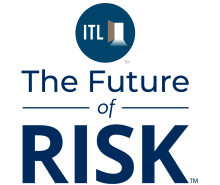When the facts change, I change my mind. What do you do? – John Maynard Keynes.
The Baby Boomer generation was the first to experiment with "the Great Risk Transfer" (GRT), a trend in which risks were transferred from institutions to individuals. In employee benefits, it manifested as workplace pensions moving away from defined benefit (DB) plans to defined contribution (DC) plans. Behavioral economics played an important role in this workplace pension risk transfer.
The moment of truth to assess the effects of the GRT and behavioral steering experiments is upon us, and the telltale signs are not too exciting. Baby Boomers are facing a retirement crisis, with fewer savings in their pension pots at the point of retirement or facing the prospect of running out of money while in retirement. Given the checkered results of the GRT, governments are embarking on a new wave of systemic pension reforms. The essence of these reforms is not to reverse the original risk transfer and make institutions fully responsible again but to strike a middle ground where they co-own some of the risk. The reforms also limit some of the autonomy individuals previously had but did not use wisely.
This article discusses risk transfer in workplace pensions, how behavioral economics influenced the course of retirement savings and retirement spending, how the original plan unfolded, and the continuing course-correction efforts.
Baby Boomers and the Retirement Crisis
Baby Boomers, currently in their late 50s to 70s, are either entering retirement or have already moved into a retired life. Representing a sizable portion of the population, they are facing a retirement crisis. Those who are at the doorstep of retirement are realizing that they have not saved enough, whereas those who are already retired are sensing the grim prospect of running out of money. They now have limited choices: postpone retirement, "unretire" and return to work to save for a few more years, or rely more heavily on Social Security for their income. Whatever the choice, they face a significantly reduced quality of life compared with what they once envisioned.
The cause of this predicament can be traced to the GRT, for which this generation became a "poster child" (euphemistically speaking) or a "lab rat" (if using a dysphemism). GRT is a term used by the Institute and Faculty of Actuaries (IFoA), UK, to refer to a trend of transferring risks from institutions—such as employers, the state, and financial service providers—to individuals. Prominent examples of the GRT trend include the steady shift from DB to DC pensions, the move from annuities to drawdown, fewer investment products with guarantees, and insurance products that are increasingly priced based on individual risk profiles rather than group-based pricing (Institute and Faculty of Actuaries, 2021).
A review of the retirement saving journey of employees after the GRT came into effect shows mixed results. The Homo Economicus population, or "economic man," representing a small fraction of the population—who is consistently rational, narrowly self-interested, and pursues subjectively defined ends optimally—might have done well by maximizing benefits from DC plans. In contrast, Homo Communis, or the common man representing the vast majority, who is far from rational, has not fared as well.
It is becoming increasingly evident that many retirees are sliding into a retirement crisis, with median savings significantly lower than what is needed to achieve a reasonable standard of living in retirement (Chater & Loewenstein, 2022). By following the principles of libertarian paternalism, these plans allowed individuals to withdraw or liquidate their pension pots when they needed money, leading to substantial retirement fund leakage. Pension experts now ruefully opine that staying with DB plans might have produced better outcomes, as those funds are professionally managed and can cross-subsidize long-lived pensioners with contributions from those who pass away early. Meanwhile, individual participants in DC plans must worry about outliving their funds.
As the experimental generation steps into retirement, another shortcoming is revealing itself. During the long accumulation phase, DC plans focused too much on the means and methods of accumulation, while the importance of decumulation was largely overlooked. The decumulation landscape, which was previously monopolized by the option to annuitize, gained another choice: withdrawing in lump sums or flexible installments. Annuities lost their appeal, and purchasing one came to be seen as a poor financial decision due to low returns on the money invested. The longevity risk of outliving one's savings faded from the personal finance risk radar.
There is now a late realization that while accumulating a pension pot was once considered the biggest challenge, an even greater challenge lies in efficiently accessing that pot to generate a regular stream of income that protects against inflation and rising expenses in retirement.
The Making of the Retirement Crisis
The workplace pension, also known as an occupational pension or employer-sponsored pension, is one of the great welfare success stories. A workplace pension requires an employer to contribute a sum of money to a pool of funds set aside to pay for a worker's future retirement benefits. The money accumulated during an employee's working years is used to pay a guaranteed, predetermined income for life once the individual reaches a certain age and retires. As labor-intensive, manufacturing-driven economic growth swept across the developed world, providing a workplace pension was seen as the perfect way to retain talent and reward employees.
When the Baby Boomers started working, the workplace pensions that existed were defined benefit (DB) plans. Employers or institutions shouldered the entire spectrum of responsibilities, including enrollment, contributions, managing investments, and paying a sum of money on a regular basis sufficient for employees to live on for the rest of their lives. The amount of pension paid was linked to employees' wages or salaries, their length of employment, and other factors. These plans remained the most preferred or even the only workplace pension plan until labor-intensive work flourished.
DB plans started facing extreme financial stress due to the changing nature of work, an increasing old-age dependency ratio, rising life expectancy, declining fertility rates, interest rate volatility, and overall economic fragility. As pensions were guaranteed in DB plans, regulatory frameworks mandated that the funds meet their liabilities even in the worst demographic and economic scenarios. This requirement led employers to invest pension funds in assets considered safe, with minimal interest rate and inflation risks, while also producing regular cash flows to match pension payouts.
The advent of globalization and the shift in drivers of economic growth from manufacturing-based to information- and knowledge-based industries changed the course of industries. The number of new employees in traditional companies declined. The concept of employee persistence also changed, as careers no longer followed a linear pathway but were increasingly disrupted as individuals switched from one job to another. The cascading impact was that the equation between the inflow of money from contributions and the potential outflow as future pension payments began to dangerously signal a possible collapse.
This, in turn, triggered a series of reforms to reduce risk for employers and contain pension expenditures. There was a drive to gradually transfer the financial burden of retirement funding and related risks onto the employees, who were the participants and beneficiaries of the plans. What followed was a well-orchestrated shift from DB to defined contribution (DC) plans. Institutions started to mitigate their risk by closing DB plans and sponsoring DC plans to avoid liability shortfalls.
In DC plans, both the employer and employee contribute to the employee's retirement account, and the funds are invested across various financial instruments. The employee controls the amount contributed, chooses where it is invested, and bears the investment risk. The pension benefits the participant receives are based on the amount contributed, as well as factors such as market performance, inflation, fees, and taxes. The transfer of financial risk was candy-wrapped and made to appear lucrative through the application of behavioral economics principles, creating the impression that it provided employees with more freedom, control, choice, higher returns, and personalization.
The Effects of the Great Risk Transfer
The risk transfer conveniently shifted the herculean task of managing long-term retirement finances from qualified professionals and institutions to amateurs and unskilled individuals. Workplace pension plans comprise two phases: accumulation, when money is saved during the working life to create a pension pot or nest egg; and decumulation, when the pension pot is accessed, and the nest egg is hatched to generate a structured payment after retirement.
In DB plans, both phases remain closely integrated. The plan is tightly controlled and inflexible, giving employees no control or decision-making power. Despite appearing authoritarian or overly paternalistic, these plans were well-designed to account for the limitations of individual participants and were inherently more forgiving in nature. They provided equal financial security to employees across a wide spectrum of financial literacy. An employee participating in a DB plan could be unskilled or inexperienced in managing long-term finances, yet the plan ensured a financial safety net for the rest of their life.
In contrast, DC plans follow the principles of libertarian paternalism—an approach that respects individual freedom while aiming to nudge people's choices in a direction that enhances their well-being. The plan offers employees ownership, greater choice, control, and flexibility. The two phases of the plan are unbundled, and the employee must make decisions during both the accumulation and decumulation phases. Though the plan is more accommodating, it is unforgiving if employees make mistakes. Employees must actively enroll in the plan, determine the appropriate savings amount, efficiently manage their investment portfolio for several years, and then make the right decisions on how to access their retirement funds—whether by converting their pension pot into an annuity for regular income, opting for a lump sum, or choosing flexible withdrawals. If they misstep in any of these activities, the consequence is a punishment in the form of an inevitable retirement crisis faded from the personal finance risk radar.
There is now a late realization that while accumulating a pension pot was once considered the biggest challenge, an even greater challenge lies in efficiently accessing that pot to generate a regular stream of income that protects against inflation and rising expenses in retirement.
Finding the Fingerprints of Behavioral Steering
Given the complexities of risk transfer, the application of behavioral economics played a significant role in shifting risk in workplace pensions. While institutions were primarily motivated by reducing their pension liabilities, there was no equally strong incentive for individuals to willingly assume these risks. Therefore, a compelling motive had to be created to ensure the transfer happened seamlessly. To encourage participation in DC plans, they were marketed through advertisements and supported by regulatory guardrails, giving individuals a sense of security that these plans were highly regulated and safe. The relatively strong economic growth, including multiple bull-market runs in the 1980s and 1990s, acted as a macroeconomic catalyst for the expansion of these plans. This created a "steroid effect," reinforcing the belief that taking on risk and participating in DC plans would lead to a better retirement outcome than remaining in DB plans.
Employers, as sponsors of the plans, partnered with private plan providers to hold company-wide meetings introducing DC plans and encouraging participation. The benefit illustrations projected higher returns from stock market investments compared with the lower but stable returns from traditional pensions. Beyond the potential for higher returns, the plans offered employees a compelling value proposition, including tax-deferred benefits, employer-matching contributions, and plan portability. Packed with hard-to-resist benefits, DC plans quickly became the most common employer-sponsored retirement plan.
Despite the risk transfer, employers had a fiduciary responsibility toward their employees that they had to comply with. They still had the responsibility to provide qualified investment choices, guide employees toward making the right decisions, and ensure that funds were invested appropriately and that the plans were administered judiciously. In the early days, when new-age technologies had not emerged, marketing strategies, advertising, and providing in-person advice through certified advisors played an important role.
After new technologies emerged and do-it-yourself interfaces became the default choice for user engagement, any user interface, from organizational websites to mobile apps, became a digital choice architecture designed to nudge individuals. Choice architecture is the background against which an individual makes decisions and has major consequences for both decisions and outcomes. Changes to the user-interface design elements to guide people's behavior in a digital choice environment were much easier to implement. Consequently, digital behavior-steering initiatives were developed to nudge and steer individuals toward making rational choices. Given the vast time period, spanning several decades, and the comprehensive coverage of subject participants representing different demographic, geographic, psychographic, and behavioral segments, retirement savings became a perfect platform for conducting behavioral-steering experiments.
Choice architecture and nudge prompts were created to improve the participation of individuals and the decisions made by automatically enrolling an employee into a DC plan, creating curated default investment options to simplify the investment process, automatically escalating the contribution made, and, when the participant opted out, re-enrolling or re-escalating the contribution rate. These initiatives showed very promising results and gave confidence that behavioral steering could make up for the deficit in financial knowledge or rational boundedness that individuals are known for.
Behavioral Steering in Workplace Pensions: A Mistake or Misdirection?
Though Global Risk Transfer (GRT) was implemented due to economic considerations, the flaw was in the conception and execution in workplace pensions. The advocacy of libertarian paternalism and behavioral steering propositions for retirement did not work as well as initially believed (Chater & Loewenstein, 2022). The approaches were supposedly modeled to be a success based on Homo Economicus. On the contrary, the real world is represented by Homo Communis. These individuals are easily influenced by social and emotional factors and are limited by their own cognitive biases.
In addition, the supposed conclusions on the success of behavioral steering were based on limited-period studies, not longitudinal studies that reflect the multi-decadal time periods that a typical retirement saving accumulation spans across. Only a marginal percentage of the participants in DC plans are financially skilled, whereas the vast majority is unskilled and susceptible to making sub-optimal decisions. Even among those who are supposedly skilled in handling financial decisions, many are only skilled in managing immediate, short-term, or medium-term finances. Retirement saving is altogether a different beast to tame, requiring individuals to have the foresight to plan and pursue the planned path for several decades. This is an extremely rare skill and discipline that even an average Homo Economicus might find lacking.
The very hypothesis that, with the right interventions, individuals—irrespective of their financial knowledge and mental acuity—can make the right decisions to solve the retirement challenge and tackle the risks on their own was flawed and did not yield a binary result. While economic man participating in DC plans benefited immensely by judiciously leveraging deferred taxation, employer match, and better investment options, a rationally bounded Homo Communis choked due to the inability to function under the burden of excessive freedom. The decisions made by them were predominantly driven by immediacy bias, influenced by what they were going through at any given moment.
Research shows that nudges successfully influence initial decisions but lose steam over time. Nudges can make choices more likely but not the behavior that follows them (Polman & Maglio, 2024). Although nudges indeed make people more likely to select the targeted option, they use it less often and for less time compared with people who made the choice without a nudge. The lack of conscious effort might lead people to feel disconnected from their choices, potentially reducing their engagement. It is now acknowledged that the previous line of thinking—that many of society's most pressing problems can be addressed cheaply and effectively at the level of the individual, without modifying the system in which the individual operates—was a mistake (Chater & Loewenstein, 2022). Nudges can contribute substantially to fixing a "broken" policy by helping people make better choices. But behavioral economics, more broadly, should, in the longer term, also help shape the formulation and direction of policy (Loewenstein et al., 2016). Heavy-handed policies that remove individual choice seem to produce superior outcomes compared with nudge approaches that stop short of "forbidding any options" and are "easy and cheap to avoid" (Loewenstein et al., 2016).
It was probably not an optimal thought in the first place to believe that, with the right choice architecture, decisions that span several decades concerning retirement savings could be simplified into a one-time activity requiring a spot decision. To explain this in the context of the Behavior Grid designed by B.J. Fogg, it is like converting the retirement challenge into a dot behavioral change (Fogg, 2007). The grid defines three types of behavioral changes: dot, span, and path, which represent changes made respectively once, for a specific period, or for the long term starting now. The behavioral steering approaches attempted to convert retirement savings into a dot-behavior change, which the participant had to do once and then forget about it. While dot-behavior change might work for something like installing solar panels on a house, it has limited appeal for situations like retirement savings and spending, which require regular follow-through for several decades—essentially a path-behavioral change. According to Fogg, behavior change is a product of three factors: motivation, ability, and prompts (Fogg, 2009). The problem with the behavioral steering approaches experimented with in the DC plans was that they leaned heavily on the strength of triggers or prompts for a successful, permanent behavior change, even when motivation and ability remained unclear or weak. Prompting someone toward saving for retirement is not as simple as buying a consumable.
Lessons Learned: Better Late Than Never
It is clearly emerging that, despite the appeal, Guided Retirement Theory (GRT) and behavioral steering have not worked well, especially in driving the mass of Homo Communis toward a retirement paradise. It is now accepted that merely setting up defaults cannot guarantee retirement security. Unfortunately, this wisdom is dawning after a colossal failure, with a major percentage of Baby Boomers losing their way in the retirement maze. Governments across several countries have embarked on a new wave of pension reforms. Systemic interventions are being introduced, with some responsibilities shared by the governments or employers, and guidance is being provided. Governments are making changes to the approaches toward both accumulation and decumulation phases.
Educating people and engaging them to make the right financial decisions is gaining strong momentum. Making qualified and impartial advice available to everyone is another idea that is taking shape. For those who are nearing retirement, assistance and guidance in the form of financial consultations, engagement to plan for retirement, advice to make informed decisions about their pensions, and, in the worst cases where individuals have not saved enough, career consultations to prolong working years are provided.
To protect the interests of those in the early years of the accumulation phase, governments are tweaking workplace pension plans to withdraw some autonomy that the employees previously had but did not use wisely, and to impose some restrictive, hard, paternalistic approaches. Some countries have reformed or are in the process of reforming their pension systems by legalizing mandatory participation. To arrest gross leakages from retirement funds in the form of early withdrawals to meet immediate needs, the retirement fund is split into two parts: flexible and inflexible. Early withdrawals are allowed only from flexible funds, and the inflexible fund is insulated from any intermittent withdrawals. The accumulated portion in the inflexible fund can be used only for the payment of a structured pension at the time of retirement.
Another important product innovation that is gaining wide attention is the creation of collective defined contribution (CDC) plans, also known as target benefit or defined ambition plans. These plans work like a hybrid between DB and DC plans. Instead of contributing to individual accounts, the participants pool their retirement contributions into a single fund. These plans spread the investment risk across all the participants. The contributions are invested to provide members with an income during retirement. The plans provide a target pension, which is based on factors such as salary, length of service, and contribution rate. The income from CDC plans is not guaranteed and may vary based on investment performance and other actuarial factors.
Conclusion
The workplace pension risk transfer effected a paradigm shift in the core philosophy of employee benefits, fiduciary responsibility, and retirement protection. Several countries across the world adopted this model, and now reforms to strike a middle path are gaining momentum. The immediate impact of these reforms will be on the residual late-boomer cohort, which is yet to retire. The lessons learned from the experimental generation will immensely help Generation X, which is currently peaking in the accumulation phase, in seeking appropriate advice and making the right accumulation, decumulation, and retirement decisions.
As for Generation Y and Generation Z, who are respectively in the beginning and growing phases of retirement savings, some new macro challenges are emerging. The nature of work is shifting from regularized employment to freelance or gig work. This poses legal challenges in the definition of employment, the employer-employee relationship, and fiduciary responsibilities. To provide retirement savings to these demographic cohorts, carefully designed regulatory frameworks and new pension plans are needed.
With work itself becoming a matter of personal choice and freedom, behavioral economics and digital choice architecture may become even more important. The personal characteristics and traits of each generation, along with their sensitivity to behavioral steering triggers, differ. Hence, providing everyone with templated advice instead of advice personalized to their situation would not resonate with them. To manage this, it is likely that future digital interfaces will be designed to engage individuals on a personal level and provide continuous behavioral steering prompts to enforce path-behavioral change. While designing any new choice architecture for behavioral steering, it must be borne in mind that it is not the thrill of the journey that matters, but the safety of the travel and reaching the right destination.









